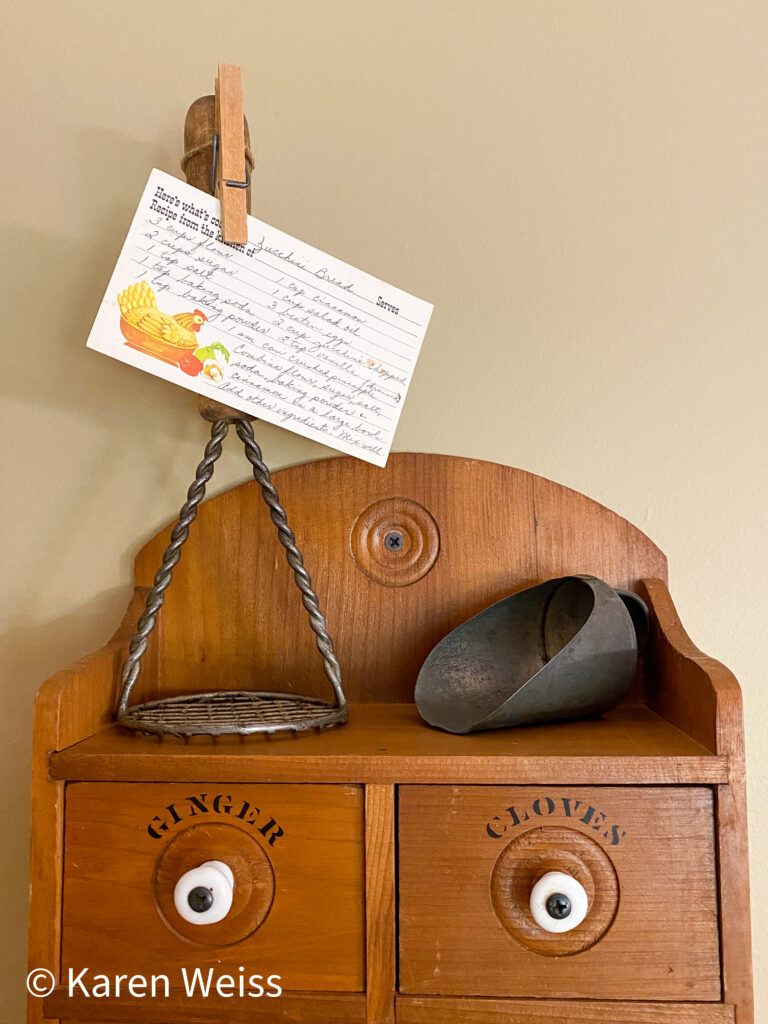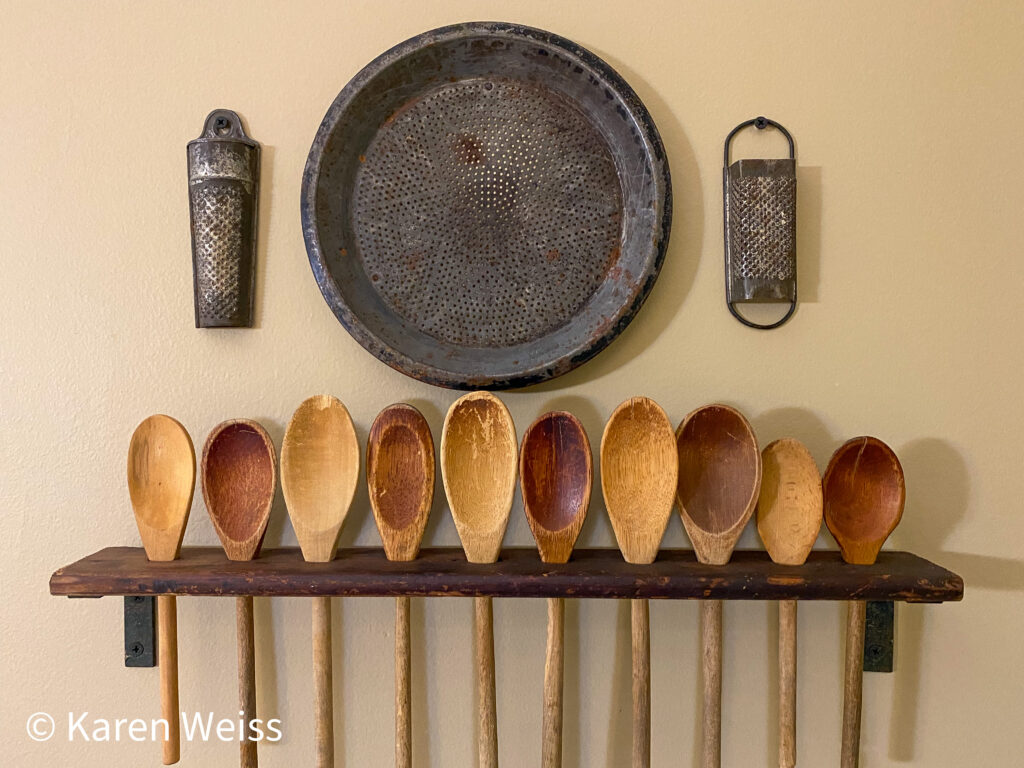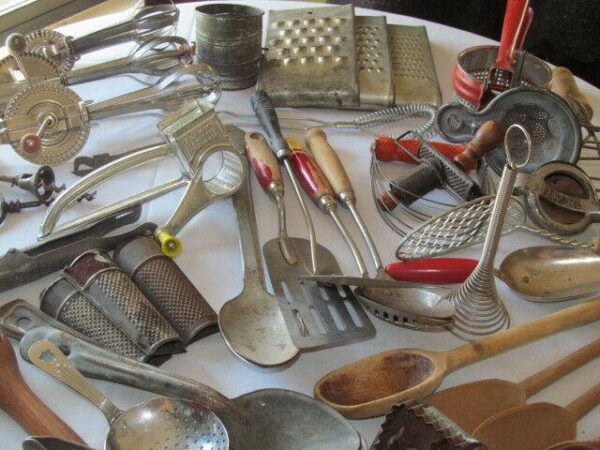#Repurposing #Grandmas #Kitchen #Gadgets #WorthPoint
Many of us hold fond memories of visiting our grandparents’ house during family get-togethers or holidays. During those visits, some of us watched our grandmothers in the kitchen, making her famous dinner and dessert recipes using old kitchen gadgets she couldn’t live without. So, what do you do with those old gadgets if you recently inherited them?
Many kitchen tools useful in the early to mid-1900s no longer serve a purpose today. Since your grandma’s kitchen gadgets hold sentimental value, you don’t want to part with them, but you don’t want to store them away to gather dust either. So, why not repurpose them into practical items? Hopefully, the following repurposing ideas will help you upcycle your grandma’s old kitchen tools into items you’ll actually use.
Today, manual cheese graters are still used to shred cheese and other foods, but most people, like myself, prefer the convenience of using a food processor or buying prepackaged shredded cheese. During the Great Depression, cheese graters gained popularity in the United States by using up a block of cheese so nothing was wasted during difficult economic times. Consequently, some popular recipes during that era included the use of a cheese grater. Many grandmothers used cheese graters to shred cheese for soups, casseroles, and pasta. They were also commonly used for shredding vegetables like carrots, potatoes, and zucchini.
Here are some ways to repurpose your grandma’s metal cheese graters:
- To create a distinctive towel holder, screw an inverted box grater into the side of a kitchen cabinet. Hang a kitchen towel from the handle and fill the inside of the grater with a collection of old wooden spoons.
- Use a box grater as a magnetic memo board to display your grandma’s photo.
- To generate ambient lantern lighting, arrange a grouping of cylinder graters on a tray and place flameless candles under them.
POTATO MASHER
Potato mashers can be used today to mash potatoes, but most people prefer to use a hand mixer to make light work of the task. The potato mashers used during the early to mid-1900s included wooden or metal handles with large-gauge wire mashing heads. Some common head designs included a rounded zig-zag pattern or S-design, square-shaped with a grid pattern, and oval-plated with slits. The wooden handles were typically painted black or white during the 1920s. Brighter colors like red, green, blue, and yellow became common during the 1930s, ’40s, and ’50s. Some painted wooden handles also featured stripes in contrasting colors.
Here are some ways to repurpose your grandma’s potato mashers:
- Use two S-design mashers as bookends to cradle your cookbooks vertically on end. Slide one wire head underneath one end of the cookbook and the other wire head underneath the other end of the cookbook to prevent the stack from collapsing.
- To create a hanging vase, rest a glass baby jar atop the masher’s wire head and secure it to the masher using a piece of wire looped around the jar’s shoulder. Fill the jar with faux or dried florals and hang the masher on a peg rack using a loop of twine.
- Attach a miniature Christmas wreath to the base of a red or green-handled masher using a twist tie to make a unique Christmas decoration. Then, wrap a festive ribbon around the twist tie and display the masher on your kitchen counter during the holiday season.

Photo courtesy: Karen Weiss
WOODEN SPOON
Although most of us use wooden spoons for cooking and baking, those spoons don’t bear the marks of our grandmothers’ hands and the time-worn years of use. Every nick, crack, food stain, and burn mark on her spoons tells a story of its past life. Most grandmothers used their wooden spoons for multiple purposes, like canning, stirring a pot of soup, tossing pasta, mixing baking ingredients, and scooping mashed potatoes.
Here are some ways to repurpose your grandma’s wooden spoons:
- To create a funky valance, fasten screw eyes to the handle ends of a grouping of wooden spoons. String ribbon or twine through the screw eyes and tie the spoons to a curtain rod. Hang the curtain rod above a kitchen window.
- To make a unique wind chime, fasten screw eyes to the handle ends of a few wooden spoons and secure split rings to the screws. Attach the split rings to various chain lengths and hang them on your front porch with the spoons positioned close enough so they will knock together when blowing in the wind.
- To create a wooden spoon star, gather five spoons that are similar in length. Lay them flat and form them into a star pattern. Then, connect them using a dab of hot glue where they overlap. Secure the overlapped sections with twine and attach a loop of twine at one of the points for hanging the star. Run a small American stick flag through the wooden spoon star and hang the star on your front door to celebrate Independence Day.

Photo courtesy: Karen Weiss
HONOR PAST GENERATIONS
Now, if you inherit some of your grandma’s old kitchen gadgets or stumble upon a box of vintage kitchen tools at an estate or rummage sale, you will have creative ways to repurpose them. Reusing them in this way will honor past generations and provide distinctive décor for your home.
Karen Weiss is a freelance writer and enjoys decorating her home with vintage finds from her many collections. She also has an Etsy shop called SimplePatinaFinds.
WorthPoint—Discover. Value. Preserve.




